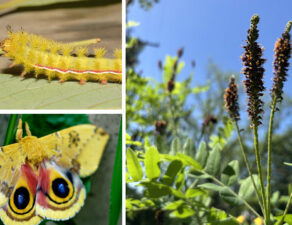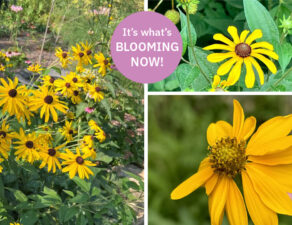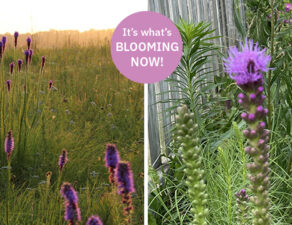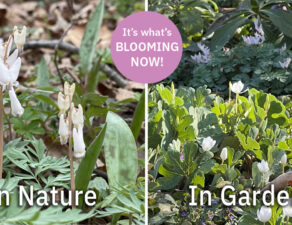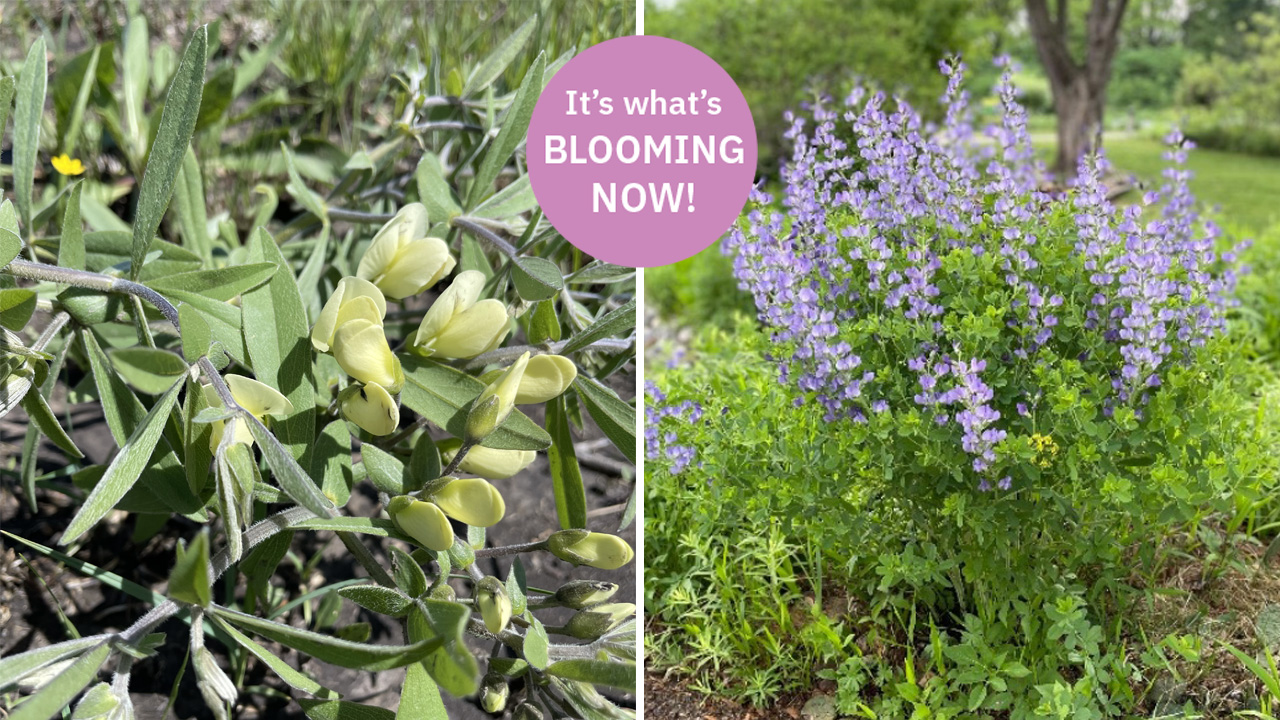
Pictured: Left: Cream Wild Indigo; Right: Blue False Indigo
Cream Wild Indigo (Baptisia bracteata) and Blue False Indigo (Baptisia australis)
In Nature
Windswept prairies have awakened in the Midwest. If you venture out this time of year, you’ll notice many prairie flowers are short and hang towards the ground. This is no coincidence! Spring pollinators emerge from the soil and spring storms push across the prairie. Cream Wild Indigo brace themselves against the wind, awaiting pollination from bumblebees. Wild Indigo Duskywing butterflies rely on both Cream Wild Indigo and Blue False Indigo as a larval food source. They lay a single egg on a plant before flying off to find another spot for their offspring.
In Gardens
Named for its deeply saturated lupine-like flowers, Blue False Indigo (Baptisia australis) is treasured by gardeners. The blooms last two or three weeks in May or June, but its handsome blue-tinged foliage, shrubby presence (four by four feet at maturity), and distinctive black seed pods make Blue False Indigo a standout from spring to autumn.
Like many taprooted plants, Blue False Indigo requires a few years to establish, and should not be disturbed once planted, so it must be sited carefully from the start. That slow-growing tap root, however, makes this beautiful plant unusually resilient, dependable and long-lived, with reports of specimens blooming after thirty or more years.
GET TO KNOW CREAM WILD INDIGO:
Light Requirements: full sun
Soil Moisture: dry to medium
Soil Description: tolerates drought and dry soil
Height: 1′ to 2′
Bloom Time: May-June
Bloom Color: creamy white to pale yellow
GET TO KNOW BLUE FALSE INDIGO:
Light Requirements: full sun to part shade
Soil Moisture: dry to medium
Soil Description: tolerates clay, shallow or rocky soil
Height: 3′ to 4′
Bloom Time: May-June
Bloom Color: indigo blue

